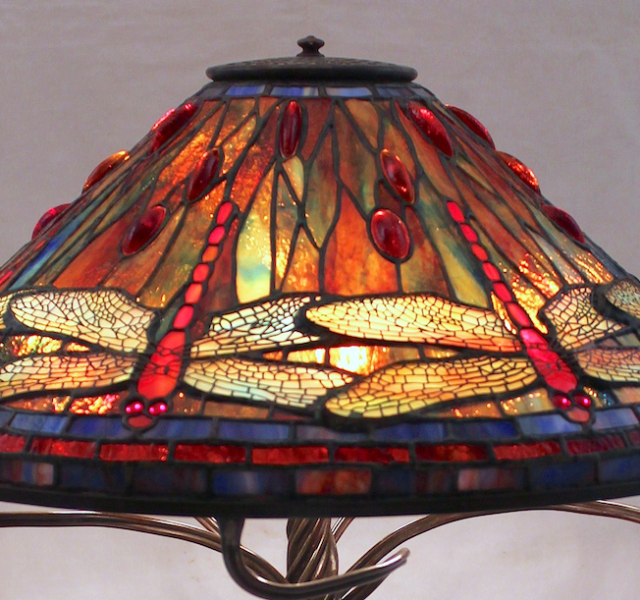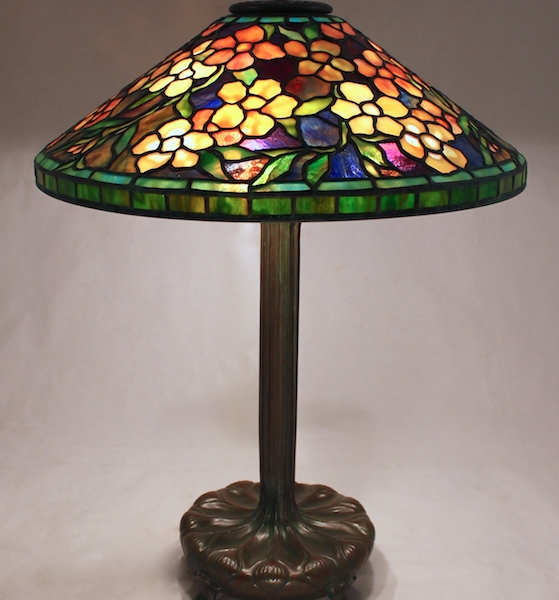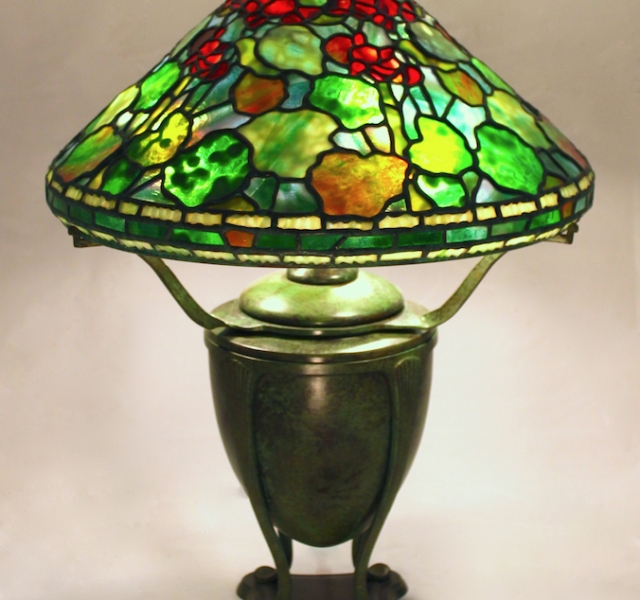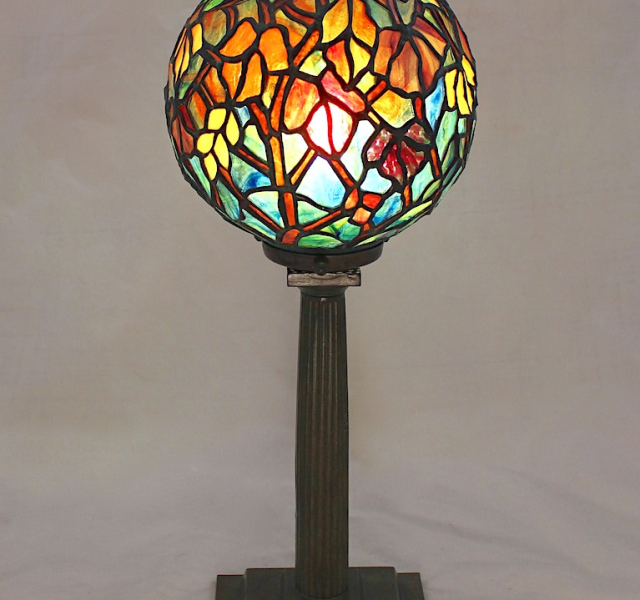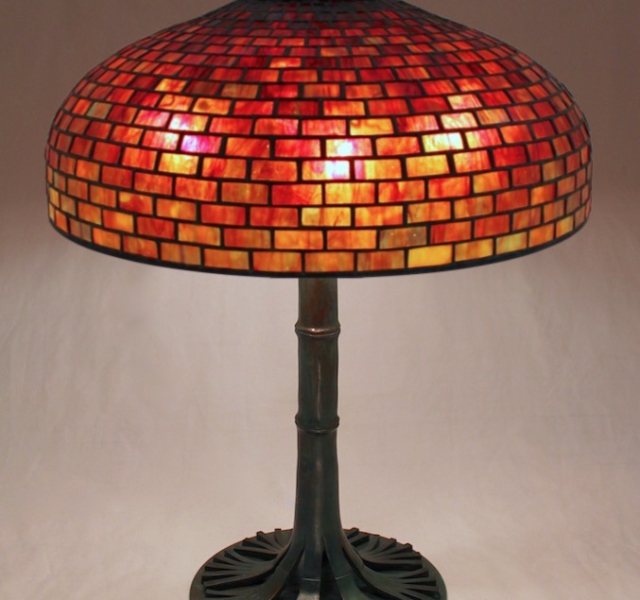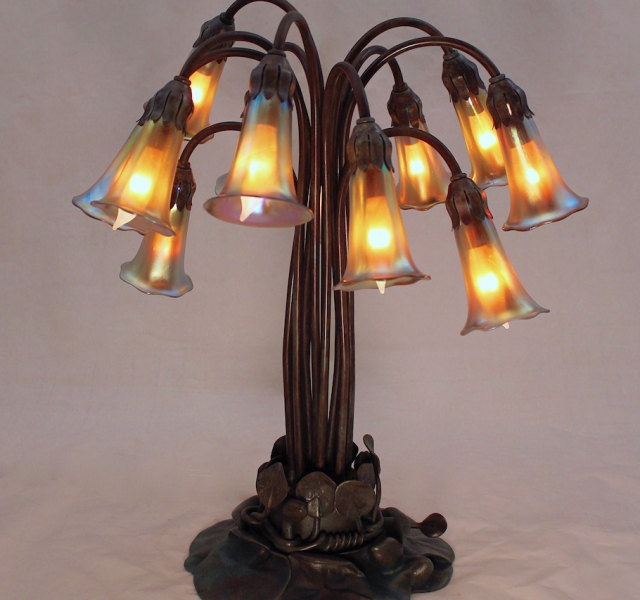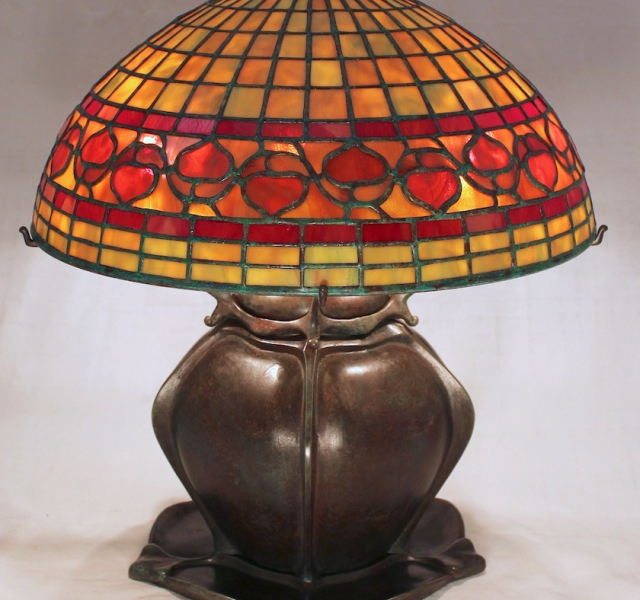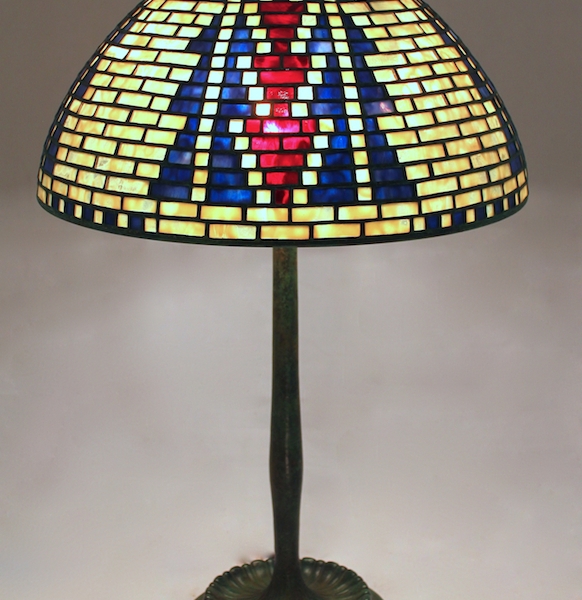The 20″ Dragonfly shade, with its elegant shape and jeweled background is a versatile shade that can be used as a table lamp, small floor lamp or chandelier fixture. The dragonfly motif is one of the pillars of Tiffany Studios lamp shade design. Dragonfly shades were created in multiple sizes and shapes. Irwin Terry is…
Blog
Lamp of the Week: 18″ Alamander
The Alamander (also called Allamander and Allamanda) is a a large flowering shrub that is often found near streams and ponds. It is often called “Golden Trumpet” even though cultivated varieties can have yellow, white, or purple flowers. For this 18″ Alalamander shade, a variety of deep orange, amber and yellow flowers are contrasted against…
14″ Dragonfly
The 14″ Dragonfly is one of our most popular reproduction Tiffany lamp designs. This compact shade can be created in virtually any coloration and features six filigreed dragonflies flying against a background studded with pressed glass jewels. For this shade, a lightly textured, multicolored glass made by the Lins Glass Foundry in the early 1990’s…
Lamp of the Week: 16″ Geranium
Geraniums give a splash of color to gardens, porches, and window boxes from early spring through late fall. For this 16″ shade, a smokey blue & green background sets off the dappled green leaves and cheerful red flowers. The rippled glass used in the borders gives a textural accent to the shade. The shade is…
Autumn Leaves Ball Lamp
Century Studios is pleased to present a new original shade design, the 8″ Autumn Leaves Ball on Doric Column base. Bill Campbell designed this compact shade to capture the brilliant colors of the trees that surround us at this time of year. The 8″ shade has a non repeating design of branches and leaves set…
Lamp of the Week: 22″ Geometric
The 22″ Geometric shade is a large, impressive shade that can be created in any coloration. For this piece, we began with a deep red at the top and gently shifted the color to a rich amber tone at the bottom. The brickwork configuration of the glass tiles gives the shade a calming appearance. This…
12 Light Lily Table Lamp
This 12 Light Lily table lamp was commissioned by a client in Philadelphia. The lily pad base from which the stems ascend is cast in bronze using molds taken from an original Tiffany Studios example. Each stem supports a hand made, mouth blown gold lily shade.
Lamp of the Week: 12″ Dogwood
This 12″ Dogwood shade was commissioned by a client in Texas in 2015. The white flowers are tinged with amber, yellow and pink, while the leaves are a fresh spring green. A fracture/streamer glass background keeps the shade light and airy. The shade is shown on the beautifully detailed Chinese base (16″ tall).
16″ Acorn
We recently completed projects for two separate clients. A local client commissioned this 16″ Acorn shade for use with an antique lamp base in their collection. With a strong amber background and accents of red and rust, this shade has a warm glow. The impressive Bell Pepper base was commissioned by an out of state…
Lamp of the Week: 16″ Indian Basket
The 16″ Indian Basket shade is a Century Studios adaptation of a 24″ Tiffany Studios chandelier fixture. Commissioned in 2013 by a client in North Carolina, the design weaves patterns of deep blue and red against the off white body of the basket. The shade is shown on the Grooved base.

